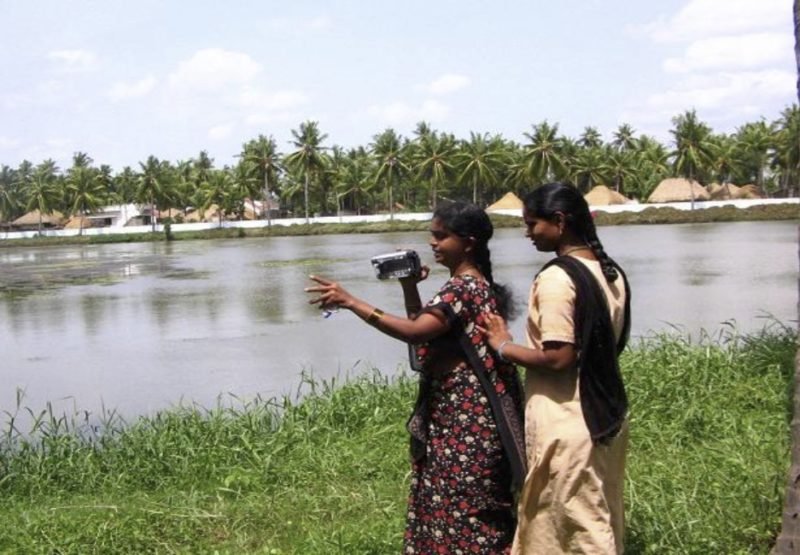
Video, Self-Representation, and Community Mobilization in Rural India
Considering the power of digital storytelling, I have worked in the field in India for several years studying how technologies can be designed to support the economic, social, and political grievances by citizens living in inner city ‘slum’ neighborhoods as well as in villages across the nation. In this research, I have studied how ‘development’ can be aided through particular uses and designs of technology – specifically technologies that are designed and built around the voices, objectives, and concerns held by local communities. In this research, which concerns issues around the digital divide, I argue that the divide is not simply about access to technology, but actually about the voices of peoples and whether they can be supported through information and technology initiatives. The issue here is one of scale: many technologies are produced at a high level of scale because of the fixed costs involved, yet do not resonate with the local concerns of communities, which in turn shapes the sustainability of a technology. To address this potential challenge between sustainability and scale, I have developed two projects that attempt to work across both these concerns.
First, I have studied how the simple use of a set of video cameras to create and share experiences, concerns, stories, and assets can help mobilize a mostly non-literate (textually speaking) community that is politically and economically disenfranchised. In this project, I argue that ‘reflective media’ hold power to assist communities to mobilize on their own terms and build capacities from the grassroots. I have studied how these types of interventions can aid public health practitioners who are working for example with HIV positive communities.
Second, I consider the issue of how policymakers and local communities may wish to communicate, but often understand the world very differently based on their own perspectives, or ontologies. Systems designed for public grievances for example are built around the logics of policymakers, thus ‘seeing like a state’, yet may not make sense to local communities who describe and classify their experiences in very different ways. The digital divide then is not simply about access but also about technological literacy, infrastructure, and diverse languages/knowledges.